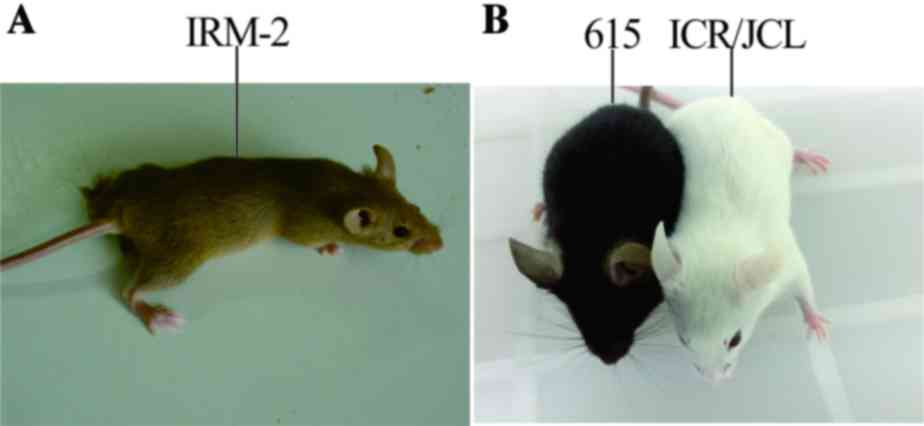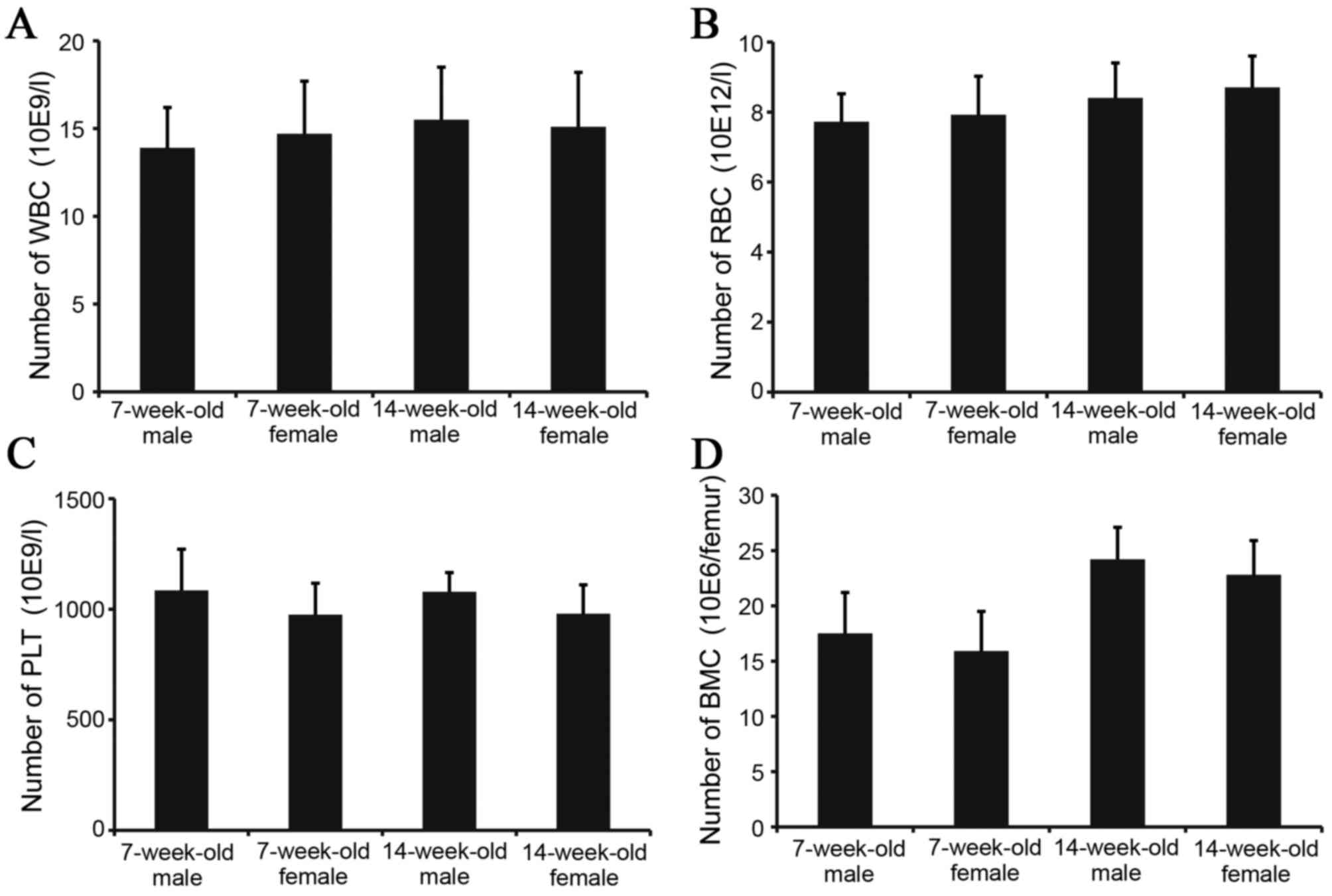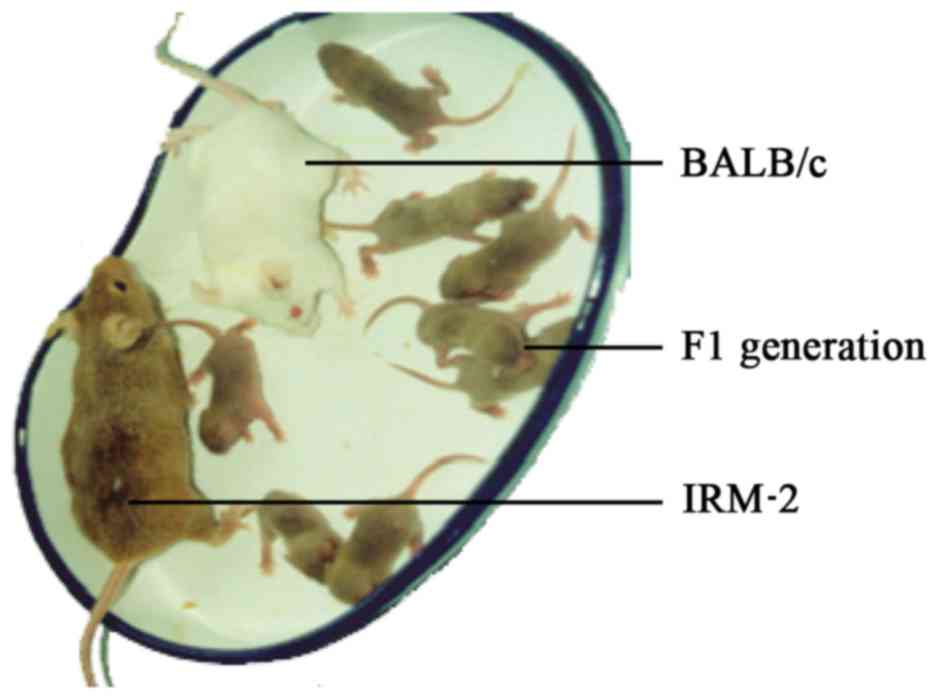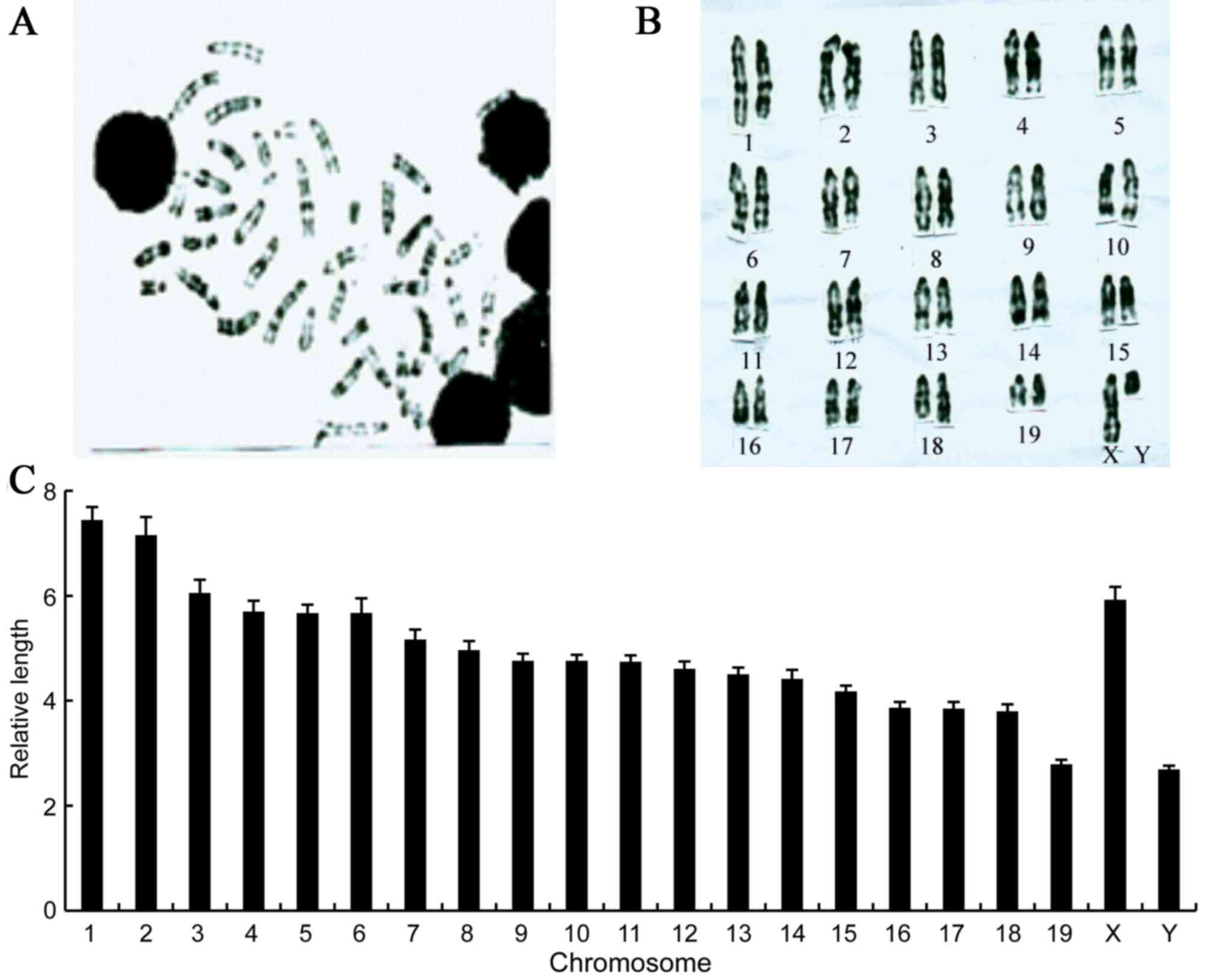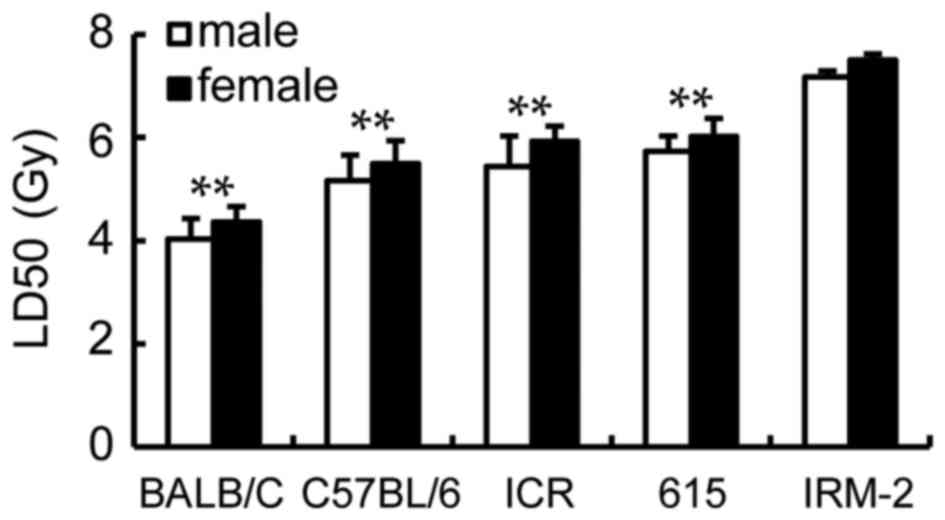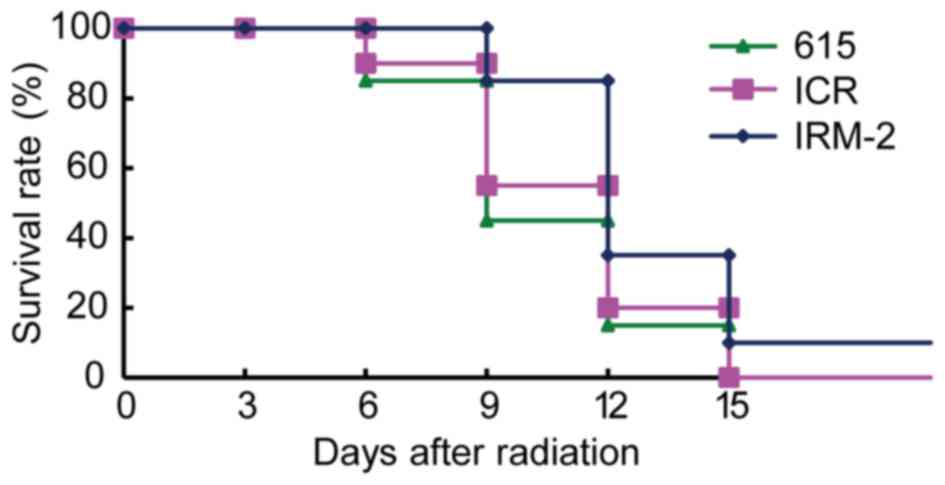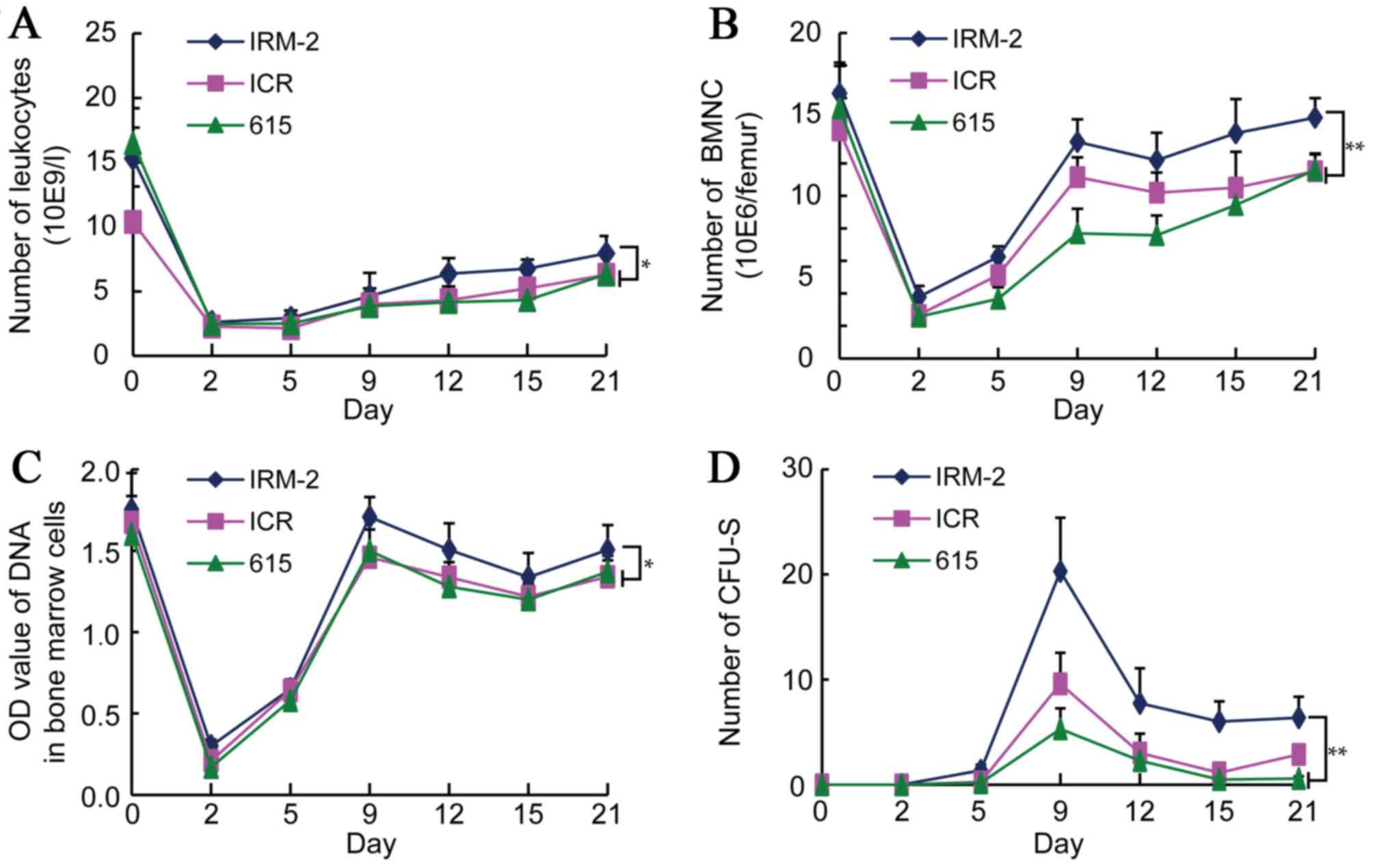The development and biological characteristics of a novel potentially radioresistant inbred mouse strain
- Authors:
- Published online on: December 22, 2016 https://doi.org/10.3892/mmr.2016.6066
- Pages: 759-767
-
Copyright: © Wang et al. This is an open access article distributed under the terms of Creative Commons Attribution License.
Metrics:
Total
Views: 0 (Spandidos Publications: | PMC Statistics:
)
Total PDF Downloads: 0 (Spandidos Publications: | PMC Statistics:
)
Abstract
The growth of biomedical research over the previous decades has been accompanied by an increase in the number, complexity and diversity of experimental animals developed as research tools, and inbred mice are some of the most widely used. However, thus far, no inbred mice have exhibited strong radioresistance for use in radiation‑damage research. To develop a radioresistant mouse model, a female Japanese outbreeding strain ICR/JCL mouse was mated with a male Chinese inbred strain 615 mouse. From the F1 generation, the mouse line was maintained by brother‑to‑sister mating. A novel mouse strain was established over >20 continuous generations and designated the Institute of Radiation Medicine-2 (IRM-2) mouse. The biological characteristics, genetic characteristics and susceptibility to radiation of these mice were determined. The IRM‑2 mice inherited traits from the parents, including strong reproductive capacity, stable physiological and biochemical indices and few differences among individuals. According to the genetic results, the IRM‑2 mice exhibited homozygosity, isogenicity and consistency, in agreement with international standards for inbred strains. Radiosensitivity studies have previously suggested that the lethal dose (LD)50 values for IRM‑2 mice were 7.17 Gy (male) and 7.5 Gy (female), resulting in a dose reduction factor value of 1.39 (male) and 1.37 (female). The mortality of IRM‑2 mice irradiated with 8 Gy total body irradiation was 15% at day 9 and 90% at day 15 after radiation. The number of nucleated cells in bone marrow, DNA content and colony‑forming unit‑spleen counts in IRM‑2 mice after exposure to γ‑ray irradiation were markedly higher than the corresponding values for the parental strains, suggesting that the IRM‑2 mice exhibit high resistance to ionizing radiation. Thus, it is suggested that this novel inbred mouse strain may be developed as an animal model of radioresistance for future use in radiation research.



